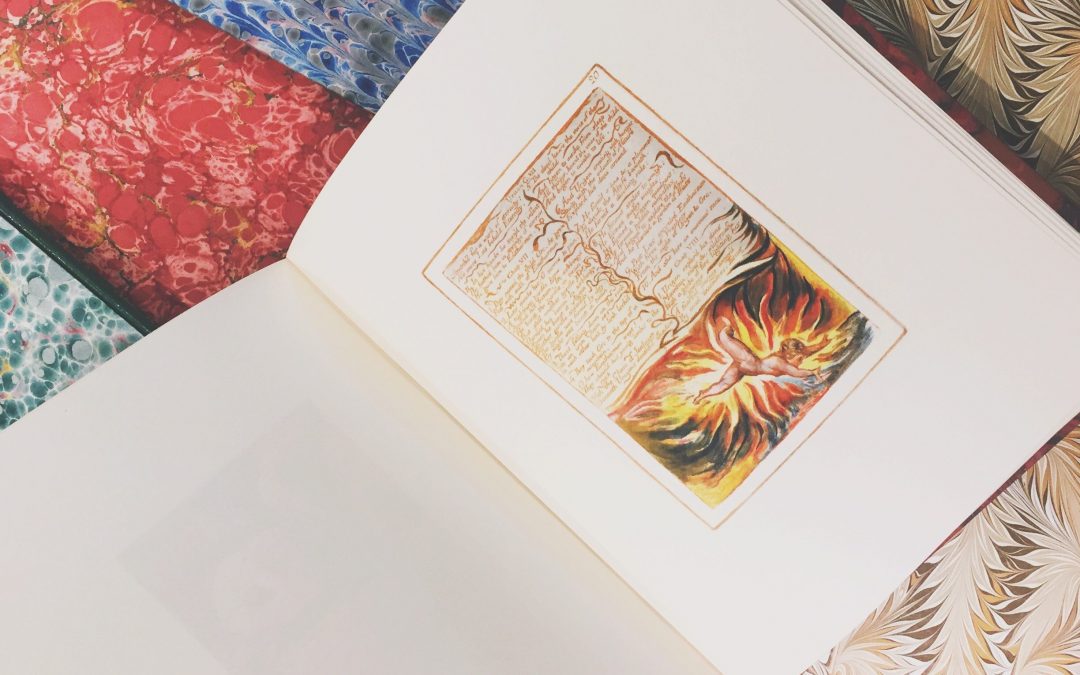
Infernal Method: William Blake Facsimiles from The Trianon Press
If the doors of perception were cleansed everything would appear to man as it is: Infinite. This I shall do by printing in the infernal method by corrosives, which in Hell are salutary and medicinal, melting apparent surfaces away, and displaying the infinite which was hid.
Engraver by profession and prophet by vocation, William Blake was opposed to print publishing, believing that the mechanisation of the industry was reducing art to a mass commodity. Reviving the illuminated manuscript, Blake produced his own works through a painstaking method of etching onto copper plates with corrosive acid. These were never intended for general sale and were necessarily limited to extremely small numbers by reason of his labour intensive methods, and thus few of the original illuminated books made in the late 18th and early 19th century have survived. Those that have are largely held by libraries and thus not easily accessible.
In one of the most remarkable literary projects of the 20th century, the William Blake Trust established the Trianon Press with the intention of creating faithful reproductions Blake’s works, in order that the consumer might experience them as their maker had originally intended. These exceptional facsimiles were issued throughout the 1950s and 60s by the Trianon Press. Sir Geoffrey Keynes, one of the trustees, had seen at an exhibition in Boston some extraordinary facsimiles of Cezanne’s watercolours, and the idea to reproduce Blake’s works as closely as possible in quality and form to the originals was born between himself and Arnold Fawcus, the Press’ founder. Hand-stencilled and hand-coloured, the books were produced at great expense and with great attention to detail, and printed on Arches pure rag paper, made especially to match that used by Blake.

Recent Comments